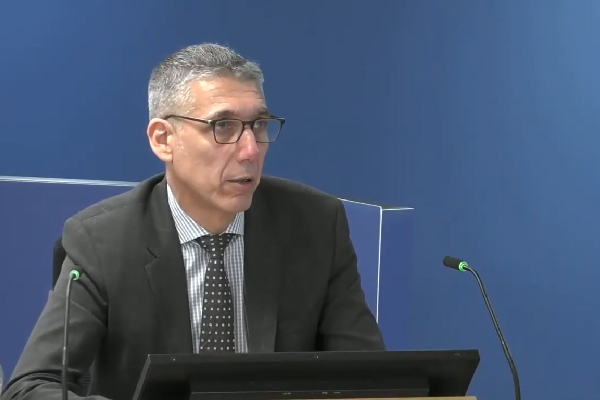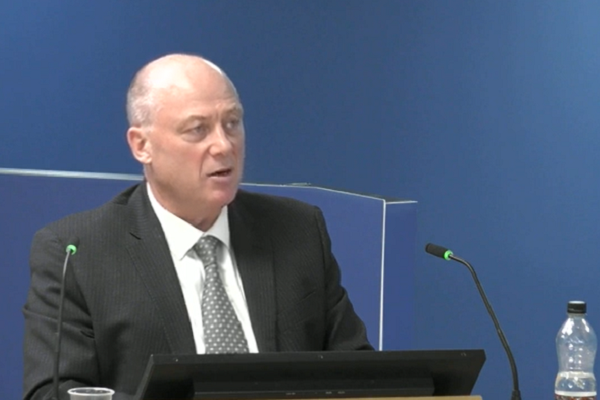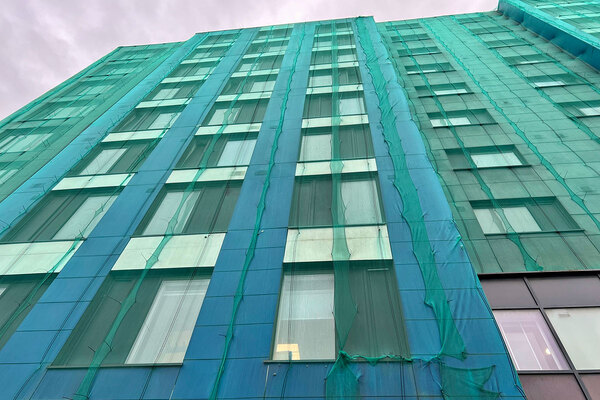LFB ‘not capable of delivering service society expects’ and requires ‘drastic culture change’, says expert
The London Fire Brigade (LFB) is “not capable of delivering the role that society expects from it”, exhibits “total disregard for technical competency” and requires a “drastic change of culture”, an expert has said in his report to the Grenfell Tower Inquiry.
Professor José Torero, a senior civil engineering professor at University College London and a world-renowned fire safety expert who has investigated incidents including the World Trade Centre collapse, was questioned about his report on the LFB at the inquiry today.
He criticised the brigade’s failure to equip incident commanders to carry out ‘dynamic risk assessments’ as incidents developed, as well as the general failure to have alternatives to a ‘stay put’ strategy in the event of a building failure.
Professor Torero said a dynamic risk assessment was necessary to deal with a fire that behaved in a way inconsistent with how a building was designed.
He said that on the night of the Grenfell Tower fire, firefighters only needed the technical knowledge that “once the fire started spreading vertically it was not going to stop” in order to realise that it was necessary to “move into a position in which rescue became the priority as opposed to fighting the fire”.
Instead, incident commanders continued to focus on fighting the fire, with residents of the tower advised to stay put until around 2.47am – more than two and a half hours after the fire started.
His report said that “at the core of these failures is a profound misunderstanding of risk within modern buildings created by inadequate education and training”.
“Given the technologies that we’re using right now in the built environment, this is an event that we had plenty of evidence that it was foreseeable,” Professor Torero said. “So actually, in reality, if you understood building construction, you will understand that buildings do behave like that.”
Dany Cotton, former commissioner at LFB, previously told the inquiry that “nobody would expect an incident like Grenfell Tower to occur” and compared the fire with a “space shuttle landing on the Shard”.
Commenting on this evidence, Professor Torero said: “If you amalgamate all the international evidence that existed, if you put it together with all the internal communications and evidence that existed on the matter, if you understood how modern building construction was developing, if you had any understanding of a fire safety strategy within a high-rise building of that nature, would you ever make a statement like that?”
In the concluding remarks in his report, he wrote: “The Grenfell Tower fire demonstrated that the London Fire Brigade, in its current structure, is not capable of delivering the role that society expects from this institution.
“For the London Fire Brigade to deliver the level of service expected by society when operating in respect to complex modern infrastructure, it requires a deep transformation that involves not only improvement of skills and professional attributes but also requires a drastic change of culture.
“At the core of this change of culture is transforming the value structure of the organisation to introduce respect and value for technical knowledge.
“Currently, the culture of the London Fire Brigade exhibits, at all levels, a total disregard for technical competency and the understanding of building performance.”
Earlier in his evidence, Professor Torero criticised the justification of reliance on the stay put strategy based on statistics which showed just 22 of 8,000 high-rise fires required the evacuation of more than five residents.
This statistic covers the 2009/10 financial year and was included in government-endorsed guidance published in 2011, which advocated strong reliance on stay put and called other strategies “unduly pessimistic”.
But Professor Torero said today that this reliance on stay put demonstrated “incompetence at all levels” – up to and including those who wrote guidance and policy.
“The reality is a risk is always defined by the probability multiplied by the consequence,” he said. “And this is one of those cases where if that component failed [the compartmentation of a building] then the consequences are massive, and you cannot ignore the potential of the consequences even if the probability is small.”
He said that looking only at instances where an evacuation was carried out meant no account was taken of “near misses”.
“Because we’re not collecting the near misses, then we’re missing all these cases where we had all the alarm bells… that were telling us that we were going in a certain direction,” he said.
He added: “What was missed is the consideration that building fabric was changing… making that assumption not necessarily correct.”
Professor Torero’s evidence concludes the section of the inquiry focusing on the London Fire Brigade.
Next week the Grenfell Tower Inquiry will hear closing statements covering the evidence on the management of the tower in the years before the fire. It will then move on to the role of central government.
This module will be split into four parts: fire services, testing and certification of products, fire risk assessments and the role of central government generally.
Update: at 6pm on 25.10.2021
This story was updated to say that Module Six will be split into four parts, not two as originally stated
Sign up for our weekly Grenfell Inquiry newsletter
Each week we send out a newsletter rounding up the key news from the Grenfell Inquiry, along with the headlines from the week
Already have an account? Click here to manage your newsletters












